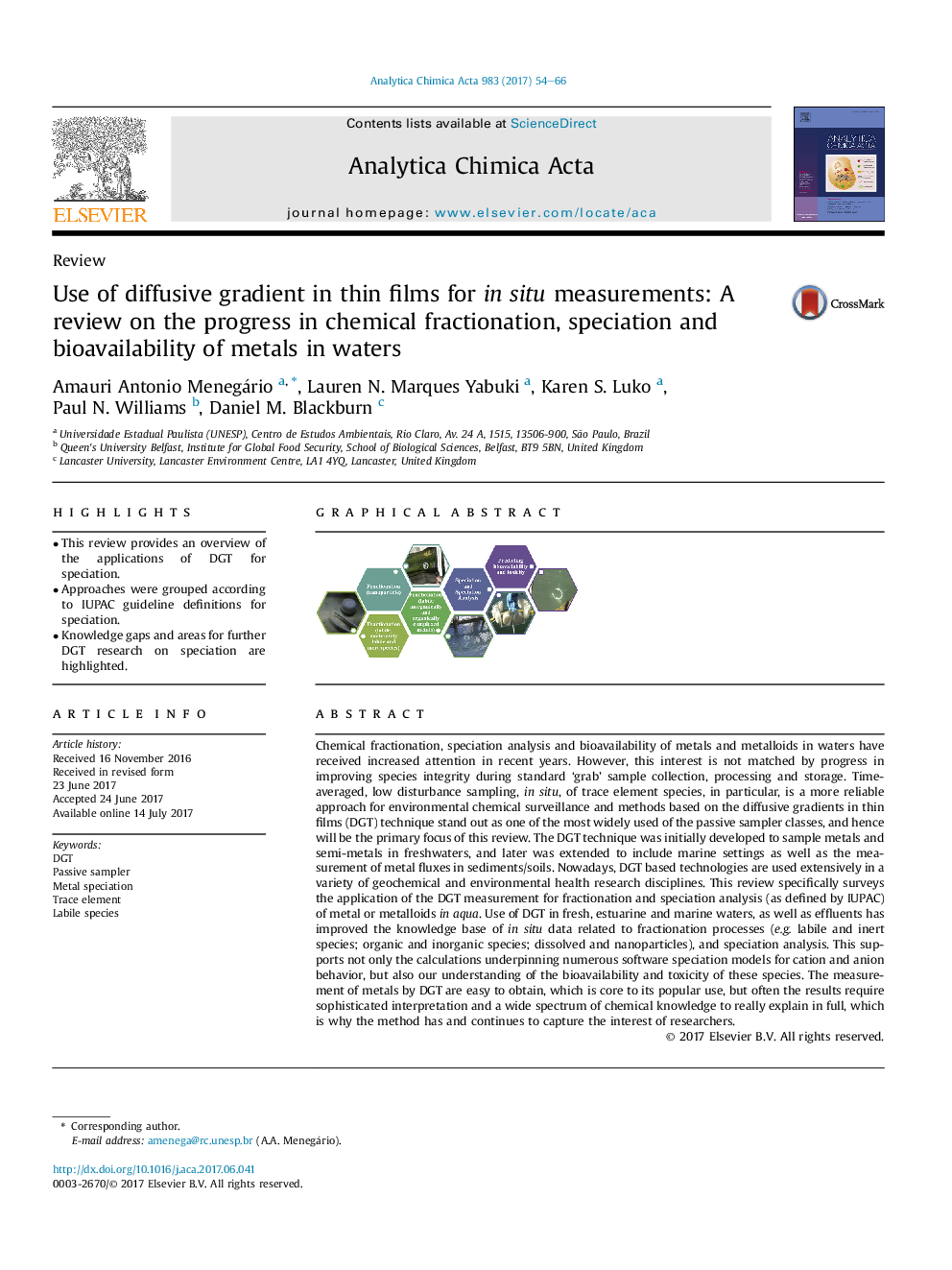| کد مقاله | کد نشریه | سال انتشار | مقاله انگلیسی | نسخه تمام متن |
|---|---|---|---|---|
| 5130646 | 1490849 | 2017 | 13 صفحه PDF | دانلود رایگان |

- This review provides an overview of the applications of DGT for speciation.
- Approaches were grouped according to IUPAC guideline definitions for speciation.
- Knowledge gaps and areas for further DGT research on speciation are highlighted.
Chemical fractionation, speciation analysis and bioavailability of metals and metalloids in waters have received increased attention in recent years. However, this interest is not matched by progress in improving species integrity during standard 'grab' sample collection, processing and storage. Time-averaged, low disturbance sampling, in situ, of trace element species, in particular, is a more reliable approach for environmental chemical surveillance and methods based on the diffusive gradients in thin films (DGT) technique stand out as one of the most widely used of the passive sampler classes, and hence will be the primary focus of this review. The DGT technique was initially developed to sample metals and semi-metals in freshwaters, and later was extended to include marine settings as well as the measurement of metal fluxes in sediments/soils. Nowadays, DGT based technologies are used extensively in a variety of geochemical and environmental health research disciplines. This review specifically surveys the application of the DGT measurement for fractionation and speciation analysis (as defined by IUPAC) of metal or metalloids in aqua. Use of DGT in fresh, estuarine and marine waters, as well as effluents has improved the knowledge base of in situ data related to fractionation processes (e.g. labile and inert species; organic and inorganic species; dissolved and nanoparticles), and speciation analysis. This supports not only the calculations underpinning numerous software speciation models for cation and anion behavior, but also our understanding of the bioavailability and toxicity of these species. The measurement of metals by DGT are easy to obtain, which is core to its popular use, but often the results require sophisticated interpretation and a wide spectrum of chemical knowledge to really explain in full, which is why the method has and continues to capture the interest of researchers.
306
Journal: Analytica Chimica Acta - Volume 983, 29 August 2017, Pages 54-66